Total Lunar Eclipse
Posted: 4 April 2015
Cloud coverage increased steadily during the day on Thursday, 2 April 2015, and continued through Friday and Saturday morning. Missed two good ISS passes due to the clouds. But the weather did give me a chance to start working with my new Nikon D7200 DSLR that arrived on Thursday, but just not for astrophotography. I went to Oracle State Park to take a photograph of its newly added sign at the main gate showing that the Park is now an "IDA International Dark Sky Park":

(By the way, I designed the new sign for Arizona State Parks.)
Late Friday night I frequently checked the sky conditions in anticipation of the short Total Lunar Eclipse on Saturday morning. The cloud cover varied from thin overcast to some broken coverage and back to overcast. The bright nearly Full Moon was almost always still visible, sometimes only as a fuzzy bright light in the sky, so I made preparations to open the observatory prior to the start of the partial phase. I had planned to Livestream the eclipse from one of my ETX telescopes using the Twitter Periscope app on my iPhone 5s, but due to the poor visibility I decided to skip the Livestreaming.
|
Open: Saturday, 4 April 2015, 0132 MST Temperature: 58°F |
Session: 804 Conditions: High thin clouds in much of sky |
This would be the first use of my new Nikon D7200 DSLR for astrophotography. After a power on glitch with the 8" LX200-ACF (for some reason it didn't get a GPS signal and required a realignment of the AutoStar), finally viewed the Full Moon at 0159 MST, 83X. No terminator was visible. I then began preparing for eclipse photography. The high ISO available with the D7200 DSLR allowed me to get this handheld fisheye sky photo, f/3.5, 1/10sec, ISO 25600, FL 8mm, at 0208 MST:
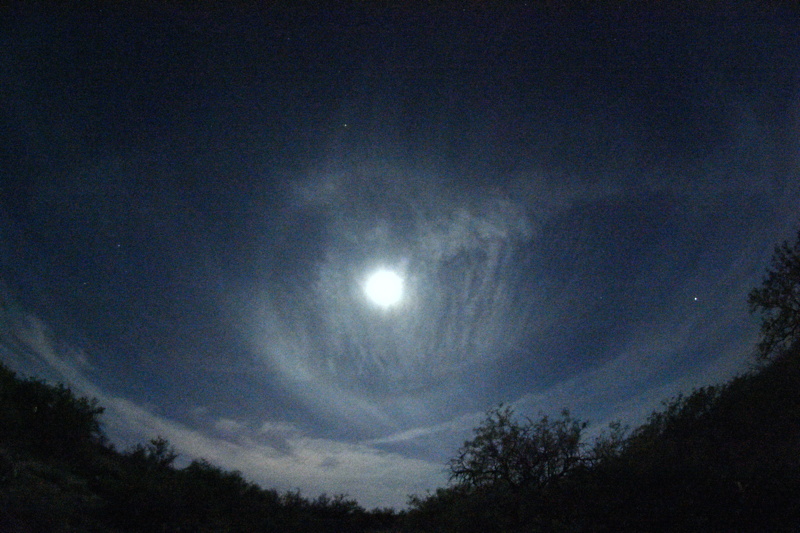
You can see a ring around the Moon in the photo and some stars in the photo. Jupiter is the bright object at the right.
I mounted the D7200 DSLR at prime focus of the 8" telescope but needed to use a f/6.3 focal reducer to get the entire lunar disk. Removed the camera, added the focal reducer, and remounted the camera. 0235 MST: photograph of the Full Moon, 1/250sec, ISO 100, full-frame (as with all photos in this report):
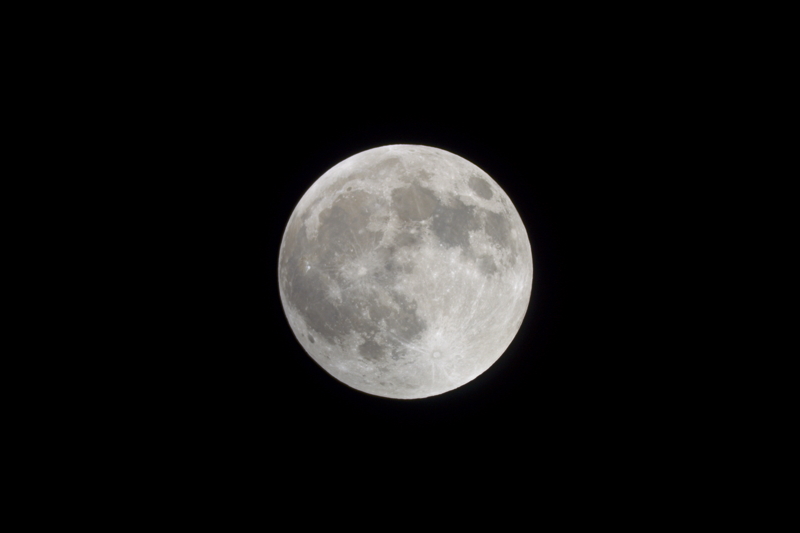
By about 0250 MST I was able to see some penumbral darkening with the unaided eye. I was able to photograph it (left side of Moon) at 0257 MST, 1/500sec, ISO 200:

Starting at 0315 MST (Partial Eclipse began) I did photos of the eclipsed Moon using various exposure settings to show the progress of the Earth's shadow. I continued photographing the Moon until 0545 MST, when it was too low in the western sky and getting into a tree. Clouds somewhat hampered the views of the eclipse.
At 0338 MST, while the eclipse was proceeding, I viewed Nova Sagittarii 2015 No. 2 using 12x70 binoculars. Although there were some thin clouds at Sagittarius, the nova was considerably brighter than it was during my last view of it on 22 March 2015. I also viewed Saturn with the 12x70 binoculars; the ring was just visible. The Moon was a pretty sight in the 12x70 binoculars. 0351 MST: the nova was visible with the unaided eye. The eclipsed Moon helped with the view of the nova.
0436 MST: viewed the eclipsed Moon with the 12x70 binoculars. The umbra was a faint red with a bright blue band at the edge.
What follows is the sequence of eclipse photos, 0315-0545 MST. Exposures were taken every 15 minutes and settings were adjusted as necessary. The two mid-eclipse photos show the red umbra, with the longer exposure showing the blue band (due to Ozone in the Earth's atmosphere).
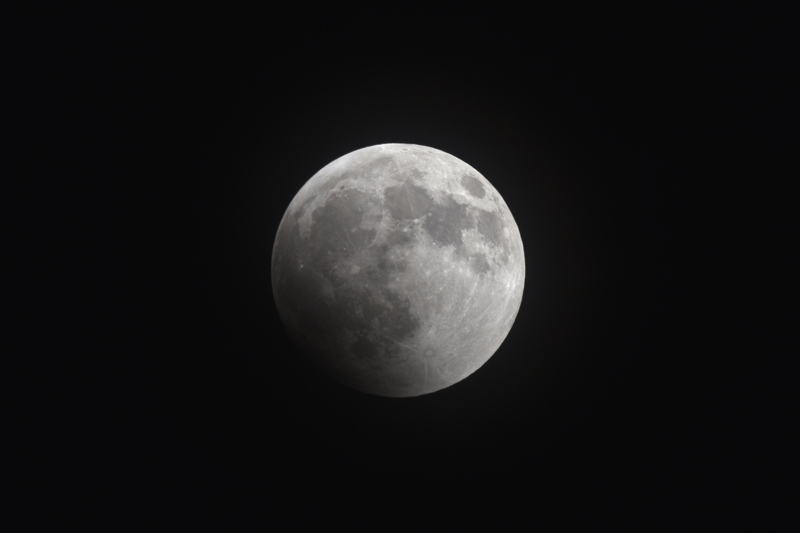

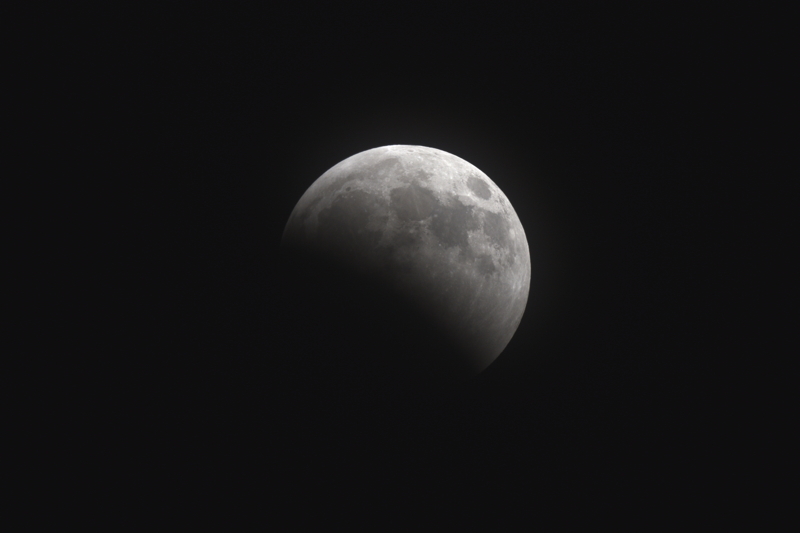
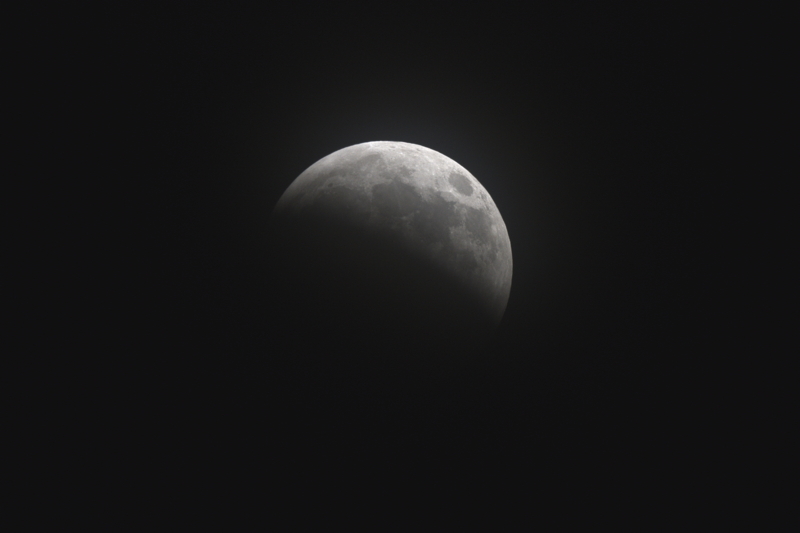
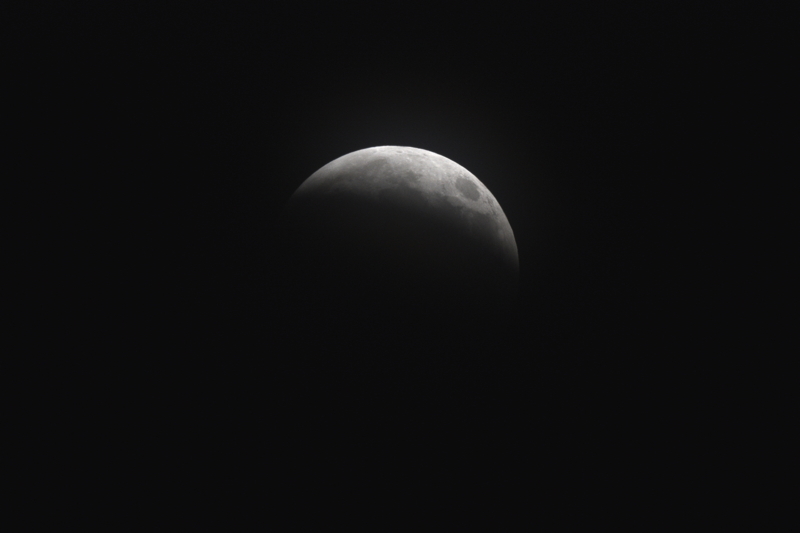
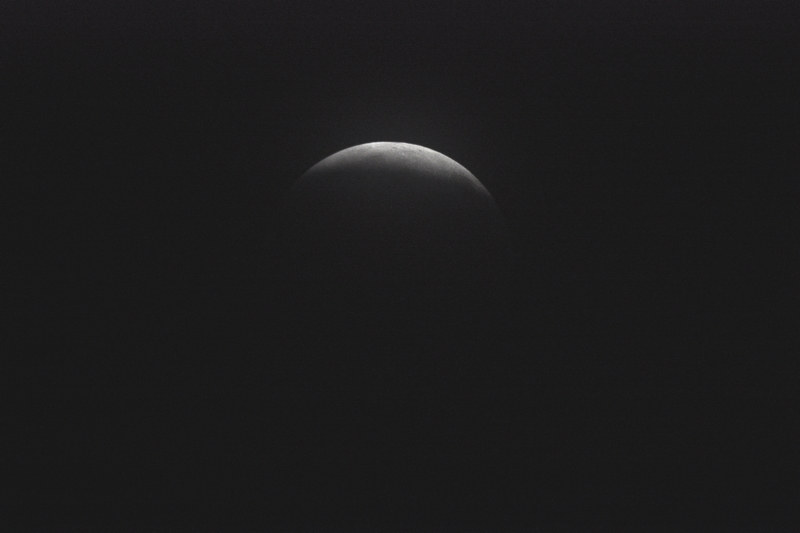

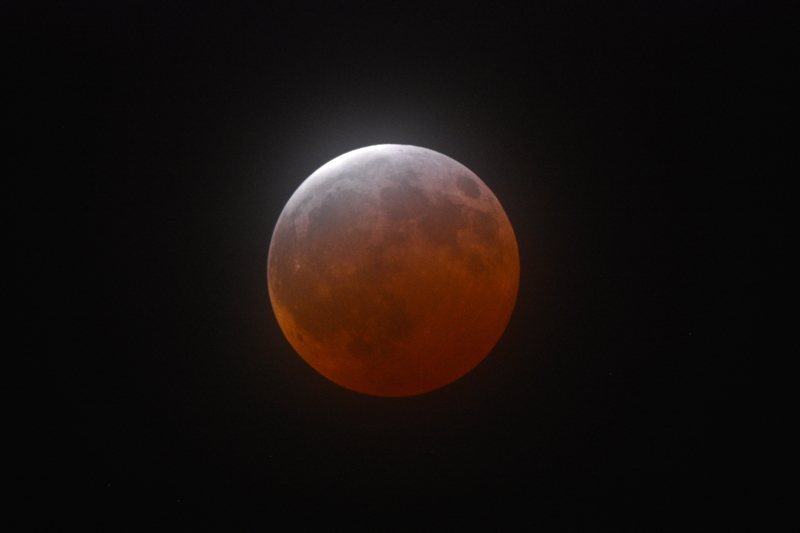
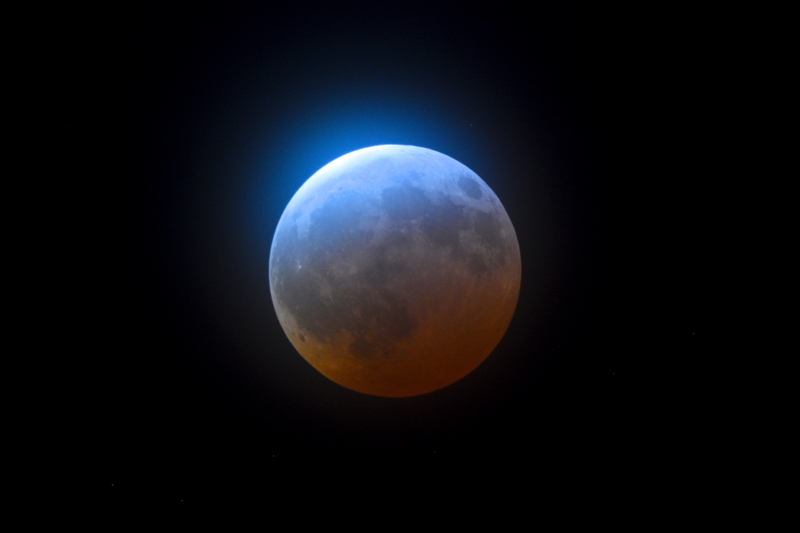
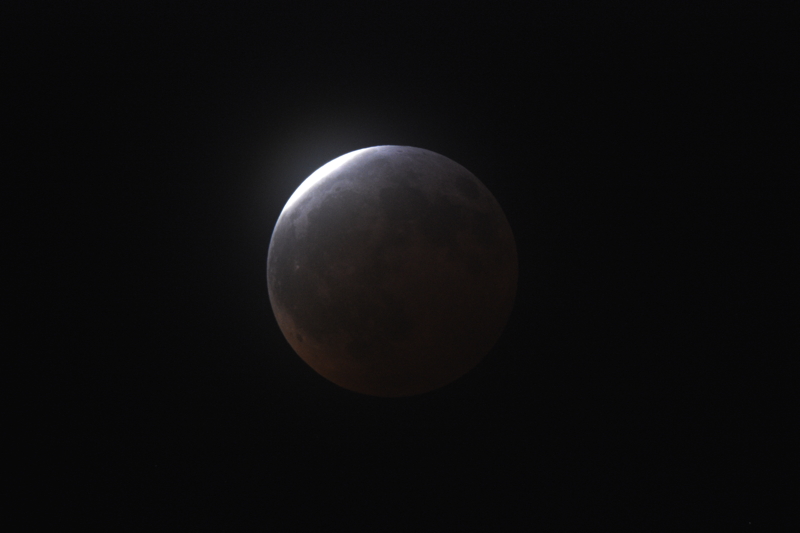
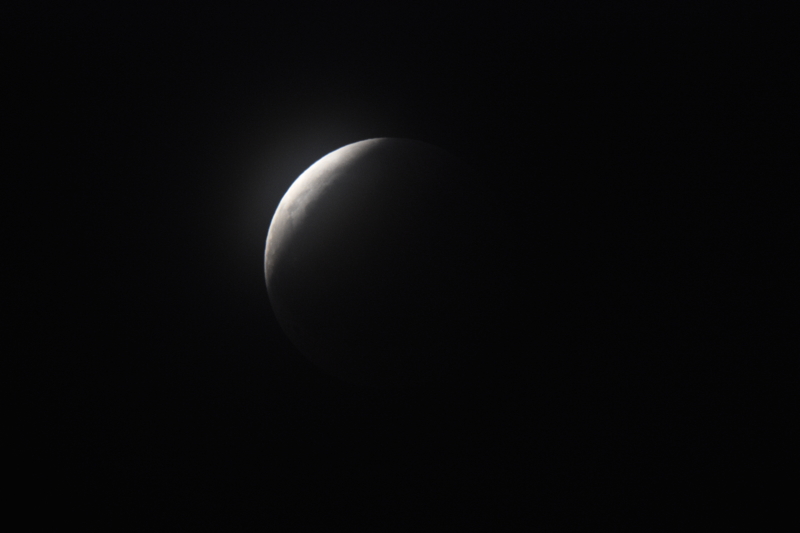
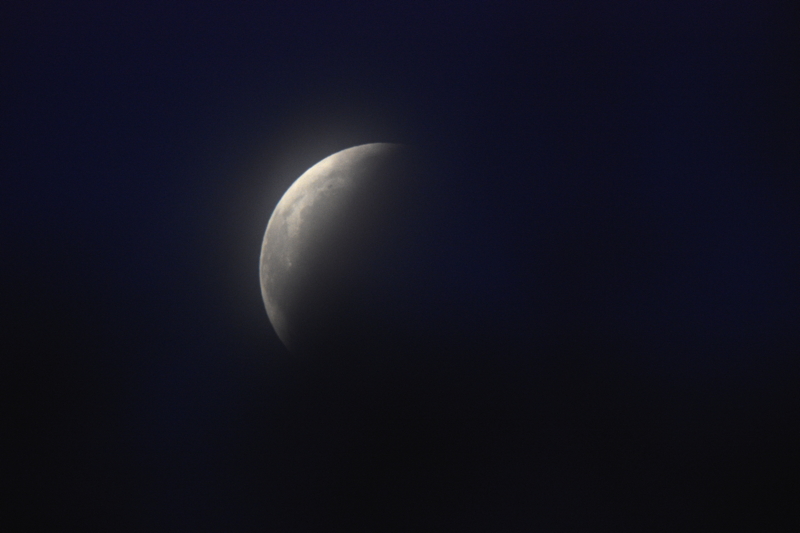
0549 MST: having removed the camera and focal reducer from the telescope, took a final look at the eclipsed Moon, 83X.
|
Close: Saturday, 4 April 2015, 0600 MST Temperature: 56°F |
|
Comments are welcome using Email. If you are on Twitter you can use the button below to tweet this report to your followers. Thanks.
Cassiopeia Observatory Home Page
Copyright ©2015 Michael L. Weasner / mweasner@me.com
URL = http://www.weasner.com/co/Reports/2015/04/04/index.html
